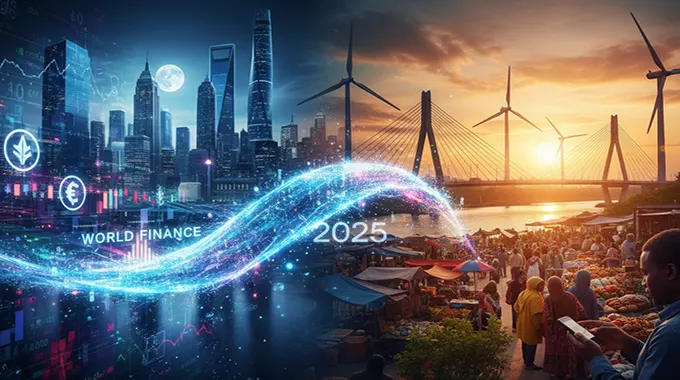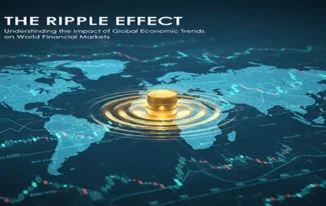The global financial landscape in 2025 presents a complex mix of continued opportunities and heightened risks for emerging economies (EMs). While EMs are generally projected to remain the primary drivers of global growth, their trajectory is heavily influenced by policy decisions in advanced economies, particularly concerning interest rates and trade, as well as by persistent geopolitical and financial stability risks.
Monetary Policy in Advanced Economies: The Ripple Effect
Decisions made by major central banks, most notably the U.S. Federal Reserve (Fed), exert a profound influence on global finance and, consequently, on EMs.
1. Interest Rate Trajectories and Capital Flows
- The Fed’s Stance: The anticipated path of US interest rates is a critical determinant. If the Fed follows through on expected rate cuts in 2025, it could be a net positive for EMs. Lower US rates typically:
- Weaken the US Dollar (USD): A weaker dollar makes EM-denominated assets, including currencies, more attractive.
- Reduce Borrowing Costs: It lowers the cost of servicing dollar-denominated debt for EM governments and corporations, easing fiscal and financial pressures.
- Spur Capital Inflows: Investors, seeking higher returns, tend to shift capital from advanced economies to EMs, boosting local markets.
- The Risk of Volatility: Conversely, if global inflation proves more persistent than expected, forcing the Fed to maintain higher-for-longer rates or even reverse course, EMs could face a challenging period of capital flight, currency depreciation, and tighter financial conditions. This scenario disproportionately impacts economies with high external debt and weaker fiscal positions.
2. Currency Dynamics and Debt Burden
The USD’s strength remains a central concern. A strong USD can be credit-negative for EMs with large amounts of unhedged debt in the US currency, as it increases the cost of repayment in local currency terms. While some forecasts suggest a slight depreciation of the dollar through 2025, any significant shift in investor sentiment or unexpected Fed policy could trigger sharp currency adjustments, increasing the risk of financial instability.
Geopolitical Risks and Trade Fragmentation
Global finance in 2025 is increasingly shaped by geopolitical tensions and protectionist trade policies, creating significant headwinds for EM export-driven growth.
1. The Impact of Trade Barriers
- Tariff Escalation: The prospect of rising trade barriers and tariffs, particularly between major economic blocs like the US, China, and the EU, is a dominant downside risk. Such measures are projected to hinder global economic growth and trade volumes, impacting EMs that rely heavily on exporting to these markets.
- Supply Chain Re-routing: While rising tariffs pose a general risk, they can also trigger a re-routing of global supply chains. Some EMs, like Mexico and Vietnam, may benefit from this shift as companies look to diversify manufacturing bases away from countries facing higher tariffs. This effect, however, is unevenly distributed across the EM landscape.
2. Geopolitical Instability
Ongoing conflicts and heightened geopolitical tensions create general market uncertainty, which often leads to risk aversion. During periods of high uncertainty, global capital typically seeks the safety of US assets, resulting in capital outflows from EMs, volatile commodity prices, and depressed business sentiment. This risk is compounded by the increasing frequency of extreme weather events and natural disasters linked to climate change, which disproportionately affect vulnerable developing nations.
Domestic Vulnerabilities and Resilience
The effect of global finance is not uniform across all emerging economies; domestic factors play a crucial role in determining resilience.
1. Elevated Debt and Fiscal Space
- Debt Sustainability: Many EMs, particularly low-income countries (LICs), entered 2025 grappling with elevated levels of public and private debt. Higher global interest rates exacerbate this challenge by increasing the debt service burden, severely restricting the fiscal space available for essential investments in infrastructure, technology, and human capital.
- Financing Challenges: Vulnerable countries continue to face difficulties in mobilizing financing for development, and the retreat of Foreign Direct Investment (FDI) over the past decade remains a concern. Developing robust and resilient local currency bond markets is seen as a key policy prescription to reduce reliance on volatile external financing.
2. Diverging Growth Prospects
Despite the risks, EMs as a group are expected to deliver robust growth, with a notable divergence in performance:
- Asia Leads: Economies in Asia, such as India and the Philippines, are projected to lead the growth charts, benefiting from strong domestic demand, favorable demographics, and growing consumer markets.
- Commodity Exporters: The outlook for commodity exporters will be closely tied to global commodity price fluctuations, which remain volatile due to geopolitical factors.
In conclusion, 2025 will be a pivotal year where global financial stability hinges on the delicate balance between monetary policy normalization in advanced economies and the escalating fragmentation of global trade. Emerging economies that have built buffers, diversified their financing sources, and committed to structural reforms will be better positioned to weather the global financial tides and capitalize on their inherent long-term growth potential.













